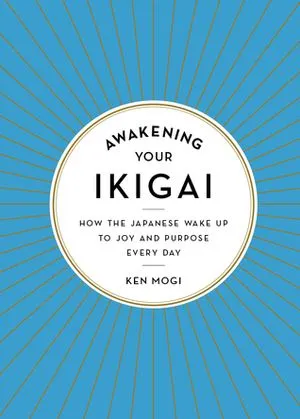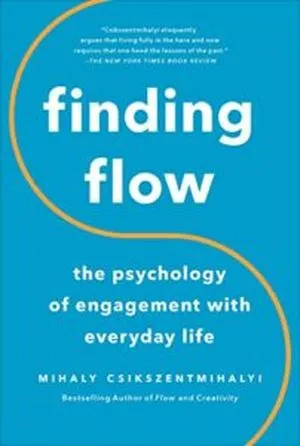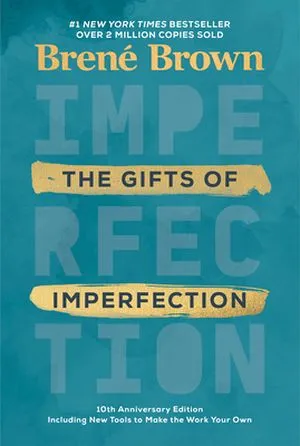
How to Enter a Flow State While Reading
Every once in a while, a story draws us in so deeply that we become wholly, fully immersed in it. The physical world around us tunes out, time stops, and our day-to-day anxieties, to-dos and distractions all fade away. The story’s world comes to life in a more tangible way and then real one within our imagination.
It’s magical — and it’s called flow.
Flow is a state of mind in which the mind is completely focused in the present and the activity at hand. Some know it better as being “in the zone,” and associate it with moments of extremely high productivity, learning or even athletic accomplishment. But it can also be found in other activities that call for deep focus, including reading.
To many, flow seems out of reach — a remarkable moment that might happen just a few times to any given person. But that’s not true. Anyone can accomplish flow, and you can even take steps to increase your flow frequency and depth. But it’s not something that just happens automatically every time one sits down to read, either (at least not for most of us).
So how do we enter into flow while reading? Here, we’ll explore the benefits, elements and ways to tap into it.
What is Flow?
Flow is a mental state where you become so absorbed in a single task you are engaged in that your mind blocks out everything else.
That sense of fluidity between your body and mind, where you are totally absorbed by and deeply focused on something, beyond the point of distraction. Time feels like it has slowed down. Your senses are heightened. You are at one with the task at hand, as action and awareness sync to create an effortless momentum.
It’s the holy grail of focus, and is most commonly associated with the highest levels of productivity, creativity and sports. But it’s a lot more than a tool for knocking items off your to-do list or reaching peak performance.
People who hit a state of flow are fully immersed in the present moment and are consumed only by what they are doing and what the next step is. It’s a highly rewarding state of mind in which “you feel totally involved, do not experience boredom or anxiety, and…you feel totally involved and interested,” as described by Positive Psychology.
Mihaly Csikszentmihalyi, the foremost expert on the topic of flow, titled his TED Talk on the topic “Flow, the Secret to Happiness” — and it’s not just a hook, it’s a summarization of his entire body of work and why he has dedicated his research to this topic. This intense connection to the present moment is closely connected to happiness and an overall sense of fulfillment.
Activities that are good for finding flow tend to ones that a person has high interest and involvement in, and don’t trigger anxiety. Reading is perfect for this!
Finding Flow While Reading
So this all sounds great, but unless you can actually hit flow, its benefits won’t be much use to you. Fortunately, research has shown you can take steps to optimize your chances of entering a flow state, regardless of the activity:
Choose a Task Well Matched to Your Skills
This is a general flow tip that feels awkward when applied to reading for pleasure. Perhaps more appropriately, choose reading material focused on topics or themes of high interest to you, and that you’re in a good position to understand well.
If I want to hit flow, it’s probably not a good time for me, with my English major education, to pick up an advanced computer programming book and try to muscle my way through it.
Stretch Yourself
An attainable challenge is a core element of flow. This may might relate to how technically advanced of your book’s content is, the complexity and nature of its themes, or other aspects of your books.
Set Clear Goals
This is great if you’re an athlete, but I’m not sure it applies for reading as much. Perhaps, if you’re a person who might be feasibly be able to do so, you could set the goal of reading a full book over a day, and thus establish a clear mindset of long periods of attention to the book.
Eliminate Distractions
Choose a reading environment that is comfortable and where it will be easy for you to reduce competition for your attention. Turn off your phone’s alerts, put your computer away, put on some good noise-cancelling headphones.
Prioritize Process Over the End State
If you want to hit flow, you need to focus on process rather than results. Which can sound obvious when you’re already reading for pleasure. But let’s be honest, it can be easier than you’d think to turn even pleasure reading into another box to check off.
When you read, do you go in thinking about marking off another title in your Goodreads count toward your yearly goal? Of stacking it proudly back on your shelf and checking it off you list? Or are you genuinely focusing on the story you’re engaging? Maybe a little of all of the above?
When settling in to read, check yourself and remember to let go of metrics and bragging rights, and just enjoy the ride.
One way to help yourself set a mindset to optimize your odds of capturing flow long-term can be to practice meditation. This practice is known to help the mind set intention and reduce distraction.
Further Reading
If you want to learn more about the phenomena of flow and build a mindset to support tapping into it more, here are three great places to start:
Finding Flow: The Psychology of Engagement With Everyday Life by Mihaly Csikszentmihalyi
Csikszentmihalyi is the absolute expert on the topic of flow, and this is one of many books from him exploring what it is and how it works.

Awakening Your Ikigai: How the Japanese Wake Up to Joy and Purpose Every Day by Ken Mogi
While this book’s philosophy isn’t exactly about flow, flow is key to one of Mogi’s five pillars. Also, some of the foundational elements of a mindset for flow — presence and connection — are strewn throughout this philosophy.
The Gifts of Imperfection by Brené Brown
While this book isn’t directly related to flow, this general mindset will help find flow more easily. It’s not something you can pressure or bully yourself into. So let it go. Instead, allow yourself the space to be yourself, be present and find connection.
Note: There are not a great number of books available on this topic, and is a lack of diversity in the voices being published on this topic.










